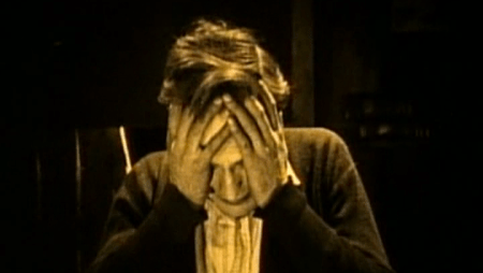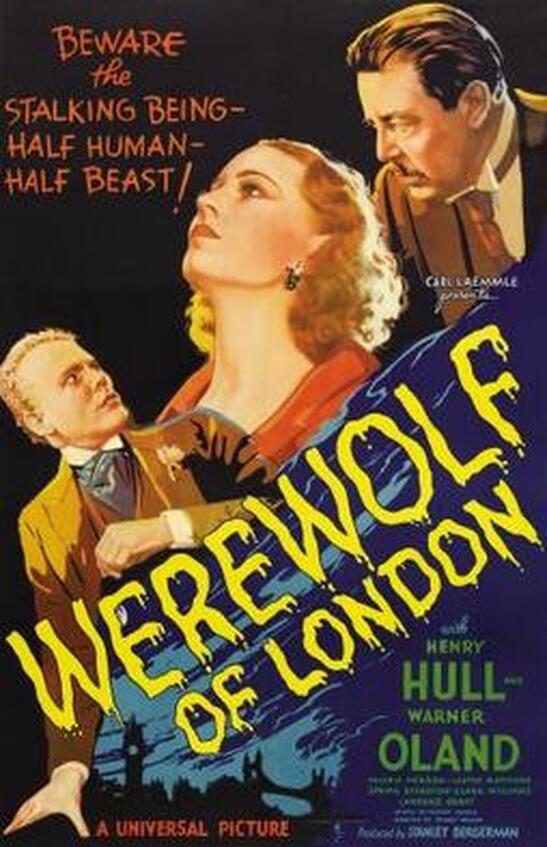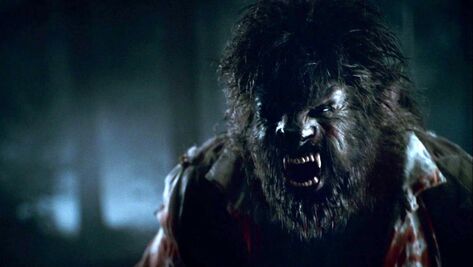 Welcome to a weekly series in which Doris V. Sutherland takes readers on a trip through the history of werewolf cinema... ...Cinematic lycanthropes are typically associated with Old World backdrops like Welsh villages or the Yorkshire moors (even American werewolves are apt to turn up in London). While recent decades saw a vogue for Native American werewolves in films like the Twilight series, most people could be forgiven for thinking that this was a modern attempt at novelty. It may come as a surprise, then, that werewolves of the silent era were treated as a New World phenomenon. The earliest known werewolf film is a 1913 short called simply The Werewolf; this is now lost, but surviving details show that its titular lycanthrope was a Navajo woman. The following year came The White Wolf, another lost film featuring a Native American shapeshifter. This brings us to the earliest surviving werewolf film, a 1925 number entitled Wolfblood: A Tale of the Forest, directed by George Chesebro and Bruce Mitchell, which locates its lupine action in the Canadian wilderness. Set in lumberjack territory, Wolfblood involves a conflict between two logging companies. Hero Dick Bannister (Chesebro) works for a small firm on the receiving end of dirty tricks from its imposing rival, the Consolidated Lumber Company. His co-workers injured by saboteurs, Dick demands that his boss Mr. Ford send help. And so, the logging camp is visited by a surgeon named Gene (Ray Hanford) and by Mr. Ford’s lovely niece Edith (Marguerite Clayton); Dick immediately falls in love with Edith – only to find that she’s engaged to Gene. So far, this mixture of love-triangle melodrama and wilderness conflict between honest men and robber-barons would be more at home alongside old Westerns than The Wolf Man. But lycanthropy comes into play after the latest sabotage effort leads to Dick being injured. Dr. Gene arranges a blood transfusion but, failing to find any human donors, announces that he will attempt an experimental treatment – involving wolf’s blood. Dick recovers after the procedure, but what side effects will he suffer? We are told, via excerpts from a medical book read by Gene, that while blood transfusions from animals to humans are a reality, the question remains "whether following such transfusion the character, nature and desire of the human subject may partake of the nature of the animal whose blood was used". Our hero loses his clean-cut demeanour and becomes a dishevelled, twitching wreck. Then, Jules Deveroux (Roy Watson) of the villainous Consolidated Lumber Company turns up dead – and Dick has no memory of where he was on the night of the incident. He faces the terrible possibility that he may be responsible: "To Bannister's mind -- weakened from the loss of blood at the time of his injury, came the remembrance of the weird tales of the Loup Garou of the Far North -- The Wolf in human form!” Wolfblood’s pseudoscientific origin for its werewolf might seem odd for modern viewers, but it is entirely typical of the film’s era. American film studios of the 1920s were – unlike their contemporaries in German Expressionist cinema – leery about supernatural horror. Monster films in US horror films tended to be exposed as frauds (like the false vampire in London After Midnight) or presented as the result of laboratory experiments (as in the various adaptations of Dr. Jekyll and Mr. Hyde). Wolfblood also fits the mood of magazine science fiction from the period, when authors like David H. Keller and Miles J. Breuer knocked out their morbid little tales of medical science gone wrong. Another aspect of the film likely to rankle a modern viewer is how bogged down it gets in its romantic melodrama. Wolfblood prefers to tell rather than show, each character being introduced with a title-card giving a potted account of whether or not they can be trusted – something that must surely have seemed clumsy even in 1925. It’s not all bad, however. A few shots here and there are effective, particularly the scenes of Dick running through the wilderness in pursuit of ghostly wolves – a basic but evocative piece of special effects indicating that the film knows what do with its limited means. Whatever the script’s shortcomings, George Chesebro does a solid job both as co-director and in playing the tormented hero Dick Bannister. You can watch the full feature below on Youtube. By Doris V. Sutherland
0 Comments
Leave a Reply. |
Archives
March 2023
|


 RSS Feed
RSS Feed